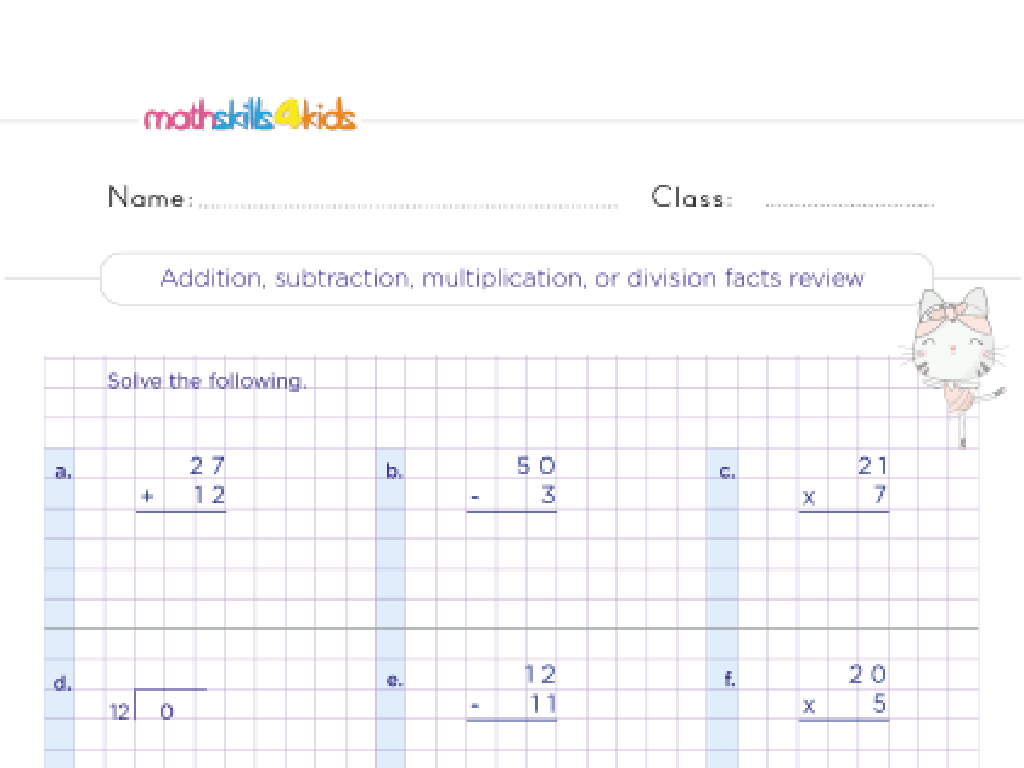Thermochemistry
Subject: Science
Grade: High school
Topic: Chemistry
Please LOG IN to download the presentation. Access is available to registered users only.
View More Content
Introduction to Thermochemistry
– Defining Thermochemistry
– Study of energy changes during chemical reactions
– Heat in chemical reactions
– How energy is absorbed or released
– Thermochemistry in daily life
– Cooking, combustion engines, and hand warmers
– Exploring practical applications
|
Thermochemistry is a branch of chemistry that deals with the energy changes that occur during chemical reactions and physical transformations. It’s important for students to understand that energy, particularly heat, can be absorbed or released during these processes. Real-life examples, such as the heat produced when cooking food, the workings of combustion engines, or the chemical reactions in hand warmers, can help students relate the concept to everyday life. Encourage students to think of other examples where they observe heat changes and to consider the practical applications of thermochemistry in various industries and technologies.
Energy, Work, and Heat in Thermochemistry
– Defining energy in chemistry
– Energy: capacity to do work or transfer heat
– Understanding work and heat
– Work: energy transfer by force; Heat: energy transfer due to temperature difference
– First Law of Thermodynamics
– Energy within a system is conserved, accounting for work and heat
– Internal energy concept
– Total energy of all particles in a system
|
This slide introduces the fundamental concepts of thermochemistry, starting with the definitions of energy, work, and heat. Energy is the capacity to perform work or produce heat, and it can be observed in chemical reactions and physical changes. Work is the process of achieving motion against a force, while heat is the transfer of energy due to a temperature difference. The First Law of Thermodynamics, also known as the law of energy conservation, states that the total energy of an isolated system is constant. Internal energy refers to the sum of all kinetic and potential energies of the particles within a system. It’s crucial for students to grasp these concepts as they form the basis for understanding energy changes in chemical reactions.
Measuring Energy Changes in Thermochemistry
– Introduction to calorimetry
– Calorimetry measures the heat of chemical reactions.
– Understanding specific heat capacity
– Specific heat is the energy to raise 1g of a substance by 1°C.
– Calculating energy in reactions
– Use q = mcT to calculate energy changes.
– Practical applications
|
This slide introduces the concept of measuring energy changes in thermochemistry, focusing on calorimetry, specific heat capacity, and energy calculations. Calorimetry is a method used to measure the amount of heat involved in a chemical or physical process. Specific heat capacity is a property that describes how much heat energy is needed to raise the temperature of a substance. The formula q = mcT (where q is heat energy, m is mass, c is specific heat, and T is the change in temperature) is crucial for calculating the energy changes in chemical reactions. Understanding these concepts is essential for students to grasp how energy is transferred and conserved in chemical processes. Encourage students to think of real-world examples where these calculations might be necessary, such as in food calorimetry or material science.
Understanding Enthalpy in Thermochemistry
– Defining Enthalpy (H)
– Enthalpy is a measure of heat change in a system at constant pressure.
– Exothermic vs. Endothermic
– Exothermic: releases heat, Endothermic: absorbs heat.
– Hess’s Law
– Hess’s Law states that total enthalpy change is the same, no matter how many steps a reaction takes.
– Calculating Enthalpy Changes
– Use Hess’s Law and standard enthalpies of formation to calculate changes.
|
Enthalpy is a central concept in thermochemistry, representing the total heat content of a system. It’s crucial for students to understand the difference between exothermic reactions, which release heat, and endothermic reactions, which absorb heat, as this influences the energy balance in chemical reactions. Hess’s Law provides a powerful tool for calculating enthalpy changes without needing to measure heat transfer directly. By using standard enthalpies of formation and Hess’s Law, students can predict the heat changes associated with chemical reactions. This slide will introduce these concepts and set the stage for practical calculations and further exploration of thermochemical equations.
Entropy and Gibbs Free Energy
– Entropy as a measure of disorder
– Entropy (S) quantifies the level of disorder or randomness in a system.
– Second Law of Thermodynamics
– This law states that the total entropy of an isolated system can never decrease over time.
– Gibbs Free Energy (G)
– G combines enthalpy (H) and entropy (S) to predict if a process will occur spontaneously.
– Predicting reaction spontaneity
– Negative G indicates a spontaneous process; positive G means non-spontaneous.
|
Introduce entropy (S) as a fundamental concept in thermochemistry that measures the disorder within a chemical system. Explain that according to the Second Law of Thermodynamics, the total entropy of an isolated system always increases over time, leading to the natural tendency of systems to move towards disorder. Introduce Gibbs Free Energy (G) as a tool to predict the spontaneity of chemical reactions, combining the system’s enthalpy and entropy. Emphasize that a negative change in Gibbs Free Energy (G) indicates a spontaneous reaction, while a positive G suggests that the reaction is non-spontaneous and requires energy input. Provide examples of spontaneous reactions like rusting iron and non-spontaneous reactions like electrolysis of water to help students understand the concept.
Thermochemical Equations
– Writing thermochemical equations
– Balance chemical equations with energy terms
– Stoichiometry in thermochemistry
– Stoichiometry helps quantify reactants, products, and energy
– Thermochemical calculation examples
– Calculate enthalpy changes in chemical reactions
– Interpreting energy changes
|
This slide introduces students to the concept of thermochemical equations, which are chemical equations that include the enthalpy change, indicating the energy absorbed or released. Emphasize the importance of balancing not only the matter but also the energy in these equations. Explain how stoichiometry is used to calculate the amounts of reactants and products, as well as the energy involved in a reaction. Provide examples of calculations, such as finding the enthalpy change for a given reaction using standard enthalpies of formation. Discuss how to interpret the sign and magnitude of energy changes, relating them to endothermic and exothermic processes. Encourage students to practice with various equations to solidify their understanding.
Applications of Thermochemistry
– Thermochemistry in daily life
– Cooking, heating, cooling systems
– Industrial thermochemistry uses
– Manufacturing, material processing
– Thermochemistry and environment
– Impact on climate change, pollution
– Energy sustainability
– Renewable energy, efficiency
|
This slide aims to illustrate the practical applications of thermochemistry in various aspects of life. Students should understand how thermochemistry plays a role in everyday activities such as cooking and home temperature regulation. In an industrial context, thermochemistry is crucial for processes like manufacturing and material synthesis. The environmental aspect covers how thermochemical processes affect climate change and pollution, emphasizing the importance of understanding these reactions. Lastly, the concept of energy sustainability is introduced, highlighting the role of thermochemistry in developing renewable energy sources and improving energy efficiency. Encourage students to think of examples in each category and consider the broader implications of thermochemistry on society and the planet.
Class Activity: Calorimetry Experiment
– Objective: Measure reaction heat
– Gather materials for the experiment
– Calorimeter, thermometer, acid, base, safety gear
– Follow the procedure carefully
– Detailed steps will guide the experiment
– Record observations and analyze
– Note temperature changes to calculate enthalpy
|
This slide introduces a hands-on class activity where students will measure the heat of reaction for an acid-base reaction using a calorimeter. The objective is to provide practical experience with calorimetry and to understand how enthalpy changes can be measured and calculated. Students should use the provided materials, including safety equipment, to conduct the experiment safely. The procedure should be explained in detail to ensure accurate results. Students will record the temperature changes during the reaction and use these observations to calculate the enthalpy change. Teachers should prepare 4-5 variations of the experiment with different acids and bases to allow for a range of observations and ensure that students can engage in a comprehensive analysis during the follow-up discussion.





